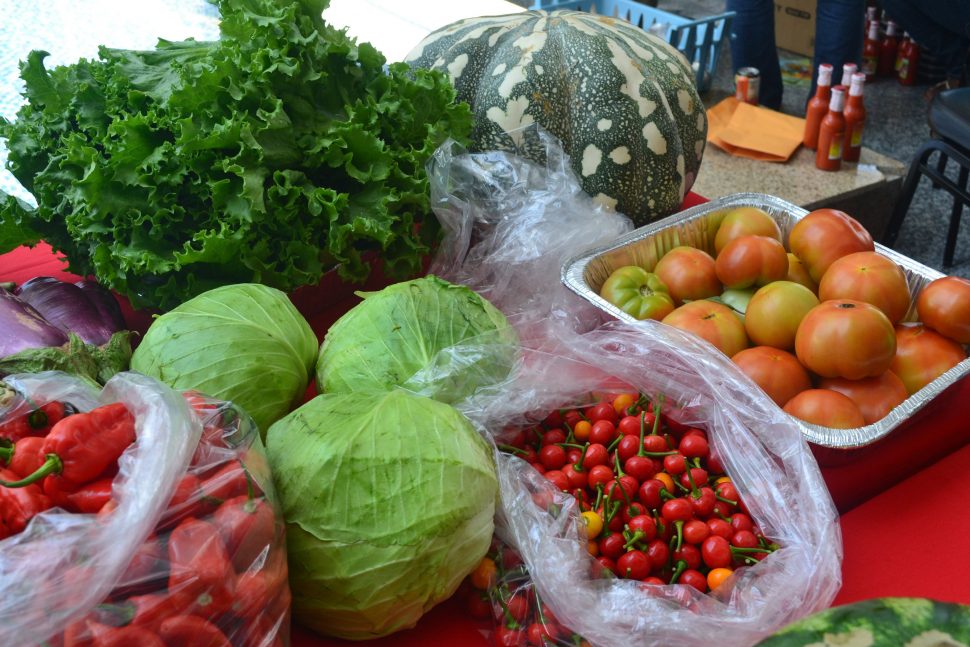For all the talk in the Caribbean regarding the relatively food secure status of many of the territories, the real picture is not one that generates unbridled optimism according to an article headlined “Five Overlooked Facts About Caribbean Food Security” authored by the Barbadian writer, Daphne Ewing-Chow, and published on February 20th in Forbes magazine.
The report, which relies significantly on the Food and Agriculture Organization’s (FAO) perspective on regional food security, paints a picture of a region which, for all its food production potential, remains financially burdened by an ever rising food import bill, seemingly with no end in sight to an ever rising dependency on foreign foods.
The article sets out what it says are five issues surrounding food security in the region, not least of which is the prognosis that its estimated US$4.75 billion 2018 food import bill is expected to increase to US$8-10 billion by 2020. According to the report, while Guyana, Haiti and Belize are the only CARICOM member countries producing more than 50% of the food they consume, the present food import figure for the region represents upwards of 60% of total food consumption for almost all CARICOM members, with half of them importing more than 80% of the food they consume.
The article notes, meanwhile, that in many parts of the region food production has declined sharply in the areas of fruit and vegetables and that gap is filled by imports. It also cites figures generated by Trinidad and Tobago’s National Flour Mills (NFM) pointing to a drop in rice production over the past 27 years from 21,200 tons to 585 tons in 2019, despite the fact that the country’s local annual demand for rice is 34,000 tons. Jamaica’s foreign food consumption pattern is also a matter for concern, according to the report which notes that the island imports more than 85% of its annual consumption of onions which amounts to more than 10 million kilograms.
The Caribbean, it seems, has been indifferent to the option of remedial shifts in agricultural priorities as well as the adoption of a strategic approach to replacing imports with local commodities. In this regard it notes that cassava has the potential to replace 400,000 metric tonnes of wheaten flour in the region “and if used for food, flour, feed and beer, could help reduce the region’s food import bill by 5%.
Underproduction has left Caribbean consumers dependent on processed foods. From a nutritional “imported foods tend to be lower in nutrients and higher in calories, fats, sweeteners and sodium.” FAO says that processed foods, grains and livestock products are among the top five food import categories in the region. “These poor food choices,” it adds, “are correlated with the Caribbean having the highest obesity rate in the Americas with non-communicable diseases accounting for 3 out of 4 deaths.
The report points to signs of regional indifference to ‘the land’, noting that agriculture’s contribution to GDP in the region has declined “with less than a 2% contribution for Barbados, St. Kitts and Nevis and St. Lucia and less than 1% for Trinidad and Tobago. A high import bill exposes the region to global food price shocks— it has been estimated that with high import prices, many families are spending as much as 75% of their income on food,” the report adds. Meanwhile the FAO asserts that “a continuation of the current CARICOM food import bill trends can only lead to further nutritional and economic impoverishment for the people of the region for generations to come.”
Challenging though the current food security situation already is, the spectre of climate change may portend even worse for the region. Again citing FAO projections the article states that crop yield declines of 10-25% may be prevalent by 2050 because of climate change whilst “extreme heat, droughts, floods, salt water encroachment due to rising sea levels and storms” are likely to “harm agricultural productivity and cause food price hikes and income losses.”
“In Grenada, post-Hurricane Ivan, Grenada’s surplus of $17 million turned into a deficit of $54 million. The total damage and loss to the agriculture sector experienced by Dominica and Antigua & Barbuda after the 2017 hurricane season was $212 million and $0.5 million, respectively. There is an urgent need for the region to implement climate-sensitive agriculture in order to minimise the risks associated with climate change.”
These numbers, the report says, “mask a case of extreme vulnerability, both from the perspective of public health and the economy.” Barbados has a rate of undernourishment of less than 5%, the country both “has the highest prevalence of diabetes in the Americas, and double the world’s affliction rate. This is the other side of malnutrition and the main reason why source and quality of nourishment are critical to any discourse surrounding food security,” the report adds.





